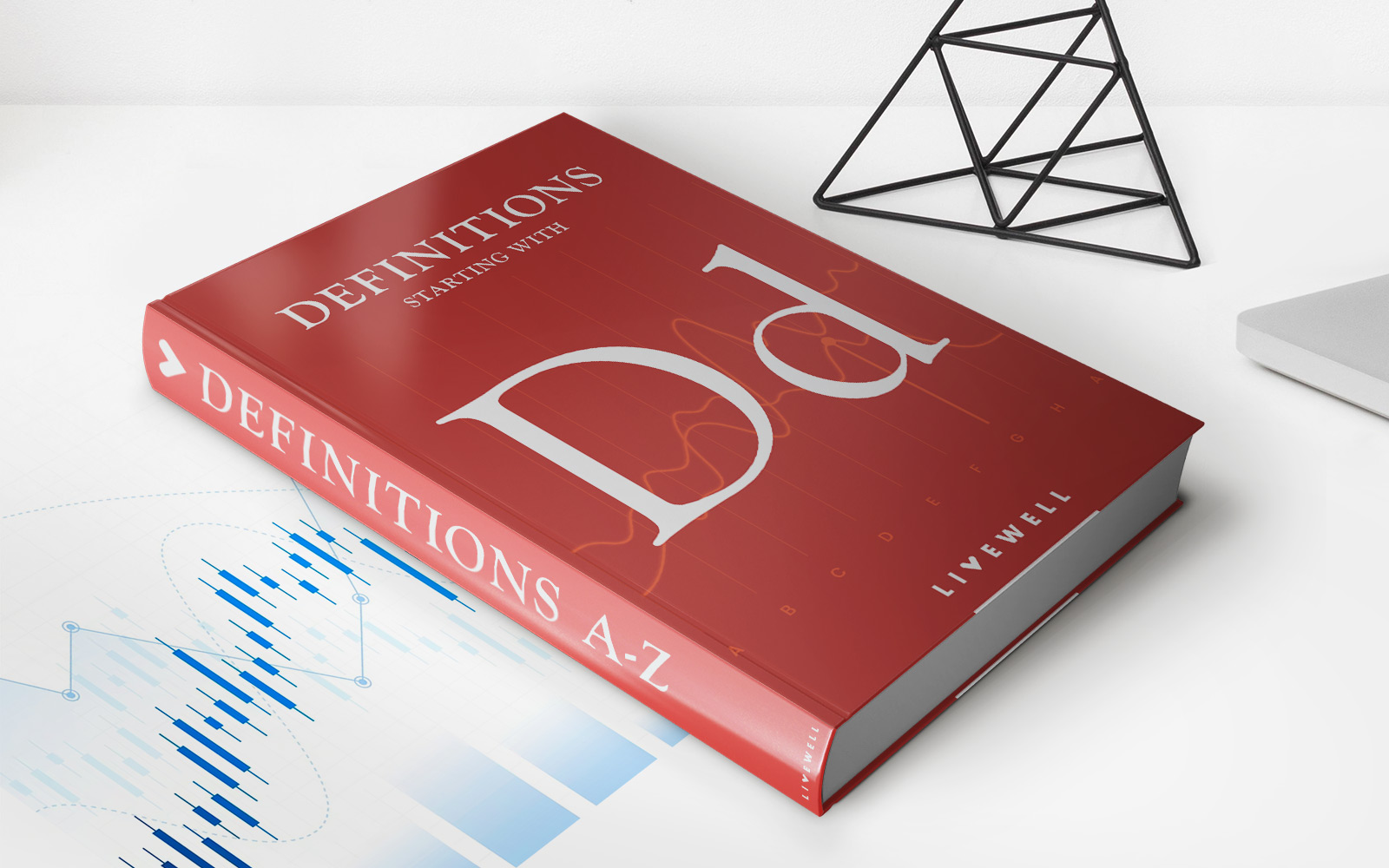

Finance
How Long Grace Period For Estimated Tax?
Published: February 21, 2024
Learn about the grace period for estimated tax payments in finance. Understand the implications and how to navigate this aspect of tax planning.
(Many of the links in this article redirect to a specific reviewed product. Your purchase of these products through affiliate links helps to generate commission for LiveWell, at no extra cost. Learn more)
Table of Contents
Introduction
Understanding the intricacies of estimated tax and its grace period is crucial for individuals and businesses alike. Navigating the realm of estimated tax can be daunting, but with the right knowledge, it becomes more manageable. This article delves into the concept of estimated tax, shedding light on the grace period associated with it and the potential ramifications of missing the deadline.
Navigating the realm of estimated tax can be daunting, but with the right knowledge, it becomes more manageable. This article delves into the concept of estimated tax, shedding light on the grace period associated with it and the potential ramifications of missing the deadline.
Estimated tax is a system used to pay tax on income that is not subject to withholding, such as self-employment income, interest, dividends, alimony, rent, gains from the sale of assets, prizes, and awards. It is a way for individuals and businesses to pay taxes on income that is not subject to withholding in a timely manner.
Understanding estimated tax is essential for those who receive income that is not subject to withholding, as failure to pay estimated tax can result in penalties and interest. This article aims to provide clarity on the grace period for estimated tax, the consequences of missing the deadline, and how to calculate estimated tax accurately.
By delving into these key aspects, readers will gain a comprehensive understanding of estimated tax and the associated grace period, empowering them to fulfill their tax obligations effectively and avoid potential penalties.
What is Estimated Tax?
Estimated tax is a method used to pay tax on income that is not subject to withholding. This includes income from self-employment, interest, dividends, alimony, rent, gains from the sale of assets, prizes, and awards. Since these types of income are not typically subject to regular withholding, estimated tax provides a way for individuals and businesses to pay taxes on such income in a timely manner.
Individuals, including sole proprietors, partners, and S corporation shareholders, as well as corporations, are required to pay estimated tax if they expect to owe tax of $1,000 or more when their return is filed. For individuals, estimated tax is typically paid quarterly, with due dates falling in April, June, September, and January of the following year. Corporations generally follow a different schedule.
It’s important to note that estimated tax is not limited to federal income tax; it also applies to other taxes, such as self-employment tax and alternative minimum tax. Failure to pay estimated tax, or underpayment of estimated tax, can result in penalties and interest, making it essential for taxpayers to accurately calculate and timely pay their estimated tax obligations.
One key aspect of estimated tax is the requirement for taxpayers to make a good-faith estimate of their tax liability for the year and pay the estimated amount in a timely manner. This estimation involves predicting income, deductions, and credits for the year, which can be challenging, especially for individuals with fluctuating income or those experiencing significant life changes, such as marriage, divorce, or retirement.
Overall, estimated tax serves as a mechanism for individuals and businesses to fulfill their tax obligations on income not subject to regular withholding, ensuring that the government receives tax payments throughout the year rather than solely at the time of filing annual tax returns.
How Long is the Grace Period for Estimated Tax?
The grace period for estimated tax provides taxpayers with a window of time to make their payments without incurring penalties. For most individuals and businesses, the grace period for estimated tax aligns with the quarterly payment due dates. These due dates typically fall on April 15th, June 15th, September 15th, and January 15th of the following year. It’s important to note that if the 15th falls on a weekend or holiday, the due date is shifted to the next business day.
Individuals who earn income not subject to withholding, such as self-employment income, interest, dividends, and rental income, are required to make estimated tax payments by these due dates to avoid penalties. Similarly, businesses, including sole proprietorships, partnerships, S corporations, and corporations, must adhere to the quarterly payment schedule to fulfill their estimated tax obligations without incurring penalties.
The grace period allows taxpayers to accurately estimate their tax liability and make timely payments, thereby avoiding potential penalties and interest. By adhering to the quarterly due dates, individuals and businesses can ensure that they meet their tax obligations and contribute to the smooth functioning of the tax system.
It’s important for taxpayers to proactively plan for their estimated tax payments, taking into account their expected income, deductions, and credits for the year. This proactive approach enables individuals and businesses to avoid last-minute scrambling and potential underpayment, ultimately contributing to a more organized and compliant tax process.
Understanding the duration of the grace period for estimated tax is essential for taxpayers to effectively plan and fulfill their tax obligations. By aligning with the quarterly payment schedule and adhering to the grace period, individuals and businesses can navigate the estimated tax process with confidence and avoid unnecessary penalties and interest.
Consequences of Missing the Grace Period
Missing the grace period for estimated tax payments can have significant financial implications for individuals and businesses. The Internal Revenue Service (IRS) imposes penalties and interest on underpaid or late estimated tax payments, making it crucial for taxpayers to adhere to the quarterly due dates and fulfill their obligations in a timely manner.
One of the primary consequences of missing the grace period for estimated tax is the accrual of penalties. The IRS calculates penalties based on the amount of underpaid tax and the length of the underpayment period. By failing to make timely and accurate estimated tax payments, taxpayers may face penalties that can add a substantial financial burden on top of their tax liabilities.
Additionally, interest accrues on any underpaid or late estimated tax amounts. This interest is compounded daily and is calculated based on the federal short-term rate plus 3%, meaning that the longer the underpayment persists, the more interest accrues, further increasing the overall tax obligation.
Furthermore, missing the grace period for estimated tax can lead to cash flow challenges for individuals and businesses. By neglecting to make timely payments, taxpayers may find themselves with a larger-than-expected tax bill at the end of the year, potentially causing financial strain and disrupting budgetary plans.
From a compliance perspective, consistently missing the grace period for estimated tax can result in heightened scrutiny from the IRS and may lead to additional audits or inquiries into a taxpayer’s financial affairs. This can create added stress and administrative burden, further underscoring the importance of adhering to the grace period and meeting estimated tax obligations.
Overall, the consequences of missing the grace period for estimated tax payments extend beyond financial penalties and interest, impacting cash flow, compliance, and overall peace of mind for taxpayers. By understanding and proactively managing their estimated tax obligations, individuals and businesses can mitigate these consequences and navigate the tax landscape with greater confidence and stability.
How to Calculate Estimated Tax
Calculating estimated tax involves a series of steps aimed at accurately estimating tax liability and making timely payments to the IRS. For individuals and businesses, the process of calculating estimated tax begins with projecting income, deductions, and credits for the year. This estimation requires careful consideration of various sources of income, such as self-employment earnings, interest, dividends, and rental income, as well as anticipated deductions and eligible tax credits.
One method for calculating estimated tax is to use the annualized income installment method, which allows taxpayers with fluctuating income throughout the year to make more accurate and equitable estimated tax payments. This method involves calculating the tax due for each payment period based on income earned up to that point in the year, providing a more precise reflection of tax liability.
For individuals, Form 1040-ES, Estimated Tax for Individuals, serves as a valuable tool for calculating estimated tax. This form includes a worksheet that guides taxpayers through the process of estimating their tax liability and determining the appropriate quarterly payments. Additionally, the IRS provides various resources, including publications and online tools, to assist individuals and businesses in accurately calculating their estimated tax obligations.
It’s important for taxpayers to stay informed about changes in tax laws and regulations that may impact their estimated tax calculations. Keeping abreast of tax updates and seeking professional guidance, when necessary, can contribute to more precise estimations and ensure compliance with tax requirements.
Overall, calculating estimated tax requires a proactive and meticulous approach, encompassing accurate income projections, deductions, and credits, as well as adherence to IRS guidelines and resources. By mastering the process of calculating estimated tax, individuals and businesses can navigate their tax obligations with confidence and contribute to a smoother and more compliant tax experience.
Conclusion
Understanding the nuances of estimated tax and its associated grace period is essential for individuals and businesses seeking to fulfill their tax obligations effectively. By delving into the concept of estimated tax, taxpayers can gain clarity on the grace period and the potential repercussions of missing the deadline.
Estimated tax serves as a vital mechanism for paying taxes on income not subject to regular withholding, encompassing various sources such as self-employment earnings, interest, dividends, and rental income. Adhering to the quarterly due dates and the associated grace period is imperative to avoid penalties and interest, ensuring that taxpayers meet their tax obligations in a timely manner.
The consequences of missing the grace period for estimated tax payments extend beyond financial penalties, impacting cash flow, compliance, and overall peace of mind for taxpayers. By proactively planning and accurately estimating their tax liability, individuals and businesses can navigate the estimated tax landscape with confidence and stability.
Calculating estimated tax requires meticulous consideration of income, deductions, and credits, with the annualized income installment method offering a more equitable approach for individuals with fluctuating earnings. Leveraging resources such as Form 1040-ES and staying informed about tax law changes can aid taxpayers in accurately determining their estimated tax obligations.
In conclusion, a comprehensive understanding of estimated tax and the grace period empowers taxpayers to navigate their tax responsibilities with confidence and compliance. By embracing proactive planning, accurate estimation, and timely payments, individuals and businesses can contribute to a smoother and more organized tax experience, mitigating potential penalties and fostering financial stability.














